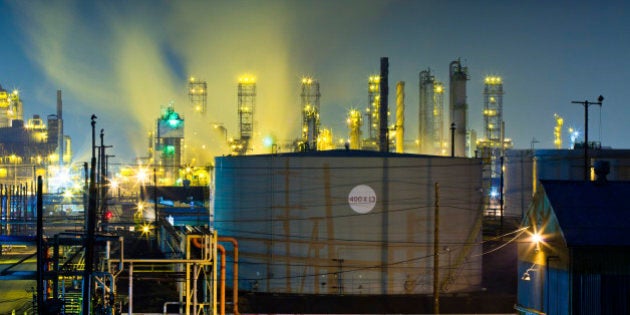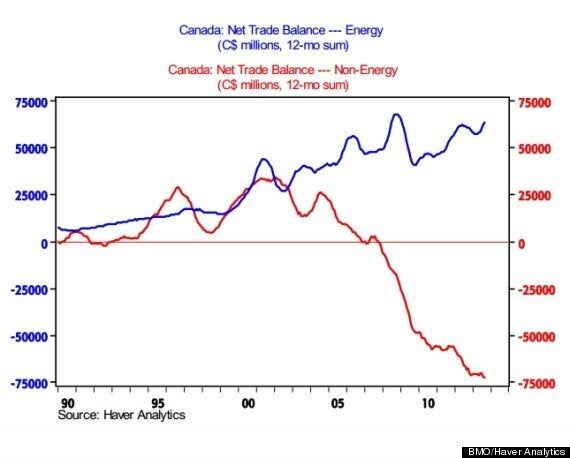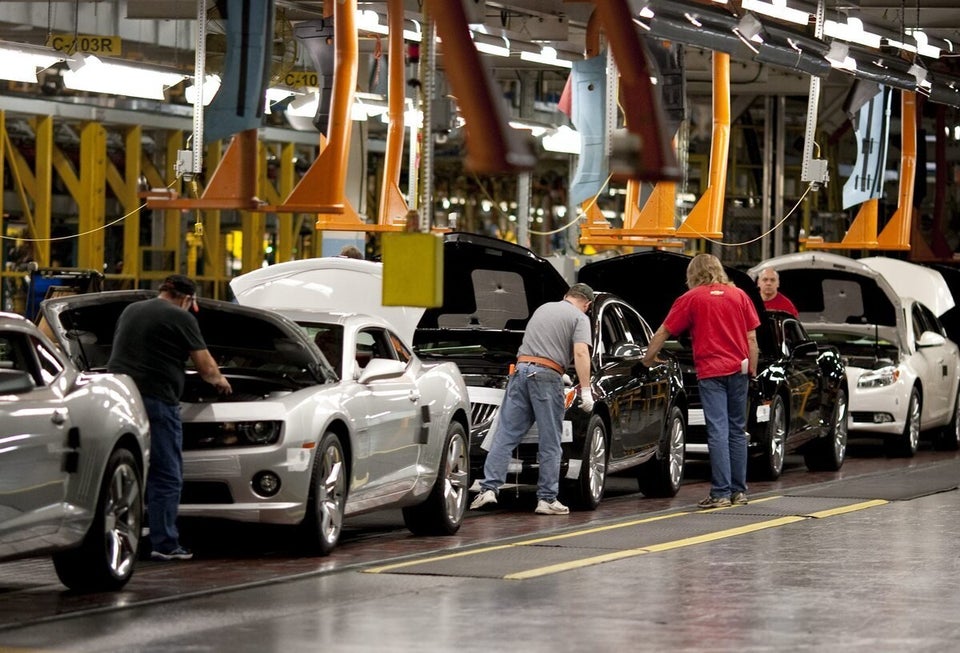
Canada no longer knows how to sell anything to the world except oil and gas.
Okay, that’s an exaggeration, but if things keep going the way they are, it won't be for long.
StatsCan’s latest numbers on Canada’s trade balance, released Thursday, look positive on the face of it: Exports and imports both grew, and Canada’s trade deficit with the world shrank by more than half, to $435 million.
But dig a little deeper into the data, and what you see is a story of two different export sectors. As BMO chief economist Doug Porter put it in a client note Friday morning, “there is energy (doing just fine) and there is everything else (doing anything but fine).”
While energy exports have seen a $63.6-billion surplus for the past 12 months, everything else has seen a $72.9-billion deficit.
Check out this chart of Canada's trade balance for energy (blue) and everything else (red).

The gap between energy and everything else is translating into a regional divide in Canada — between the booming, oil-reliant West and the plodding economy of the rest of the country.
“The rapid pace of oilsands development is creating economic risks and regional disparities that need to be addressed,” the left-leaning Pembina Institute said in a report released this week.
The report said the “overwhelming majority” of economic benefits from the oilsands boom “are limited to Alberta. Other provinces will benefit less: even the United States would gain more employment opportunities from the oilsands than the rest of Canada if oilsands development goes ahead as projected.”
Bringing more jobs to the oilsands wouldn't work as a solution; the oil, gas and mining sector employs 225,000 people, compared to 1.5 million jobs in manufacturing. Booming oil exports simply can’t replace stagnating factory exports. (Incidentally, jobs in oil, gas and mining actually fell by about 0.2 per cent over the past year.)
In a report this week, BMO's Porter called Canada’s stagnating export sector the country’s biggest economic challenge.
“Since 2000, Canadian exports have suffered through their own version of the lost decade, with volumes essentially unchanged over that spell,” Porter wrote.
“To put that in perspective, the next slowest 13-year stretch for real exports over the past half-century was 42 per cent growth from 1970-83.”
Porter notes that manufacturing employment in Canada — which is heavily dependent on exports — has shrunk by 20 per cent since 2000, even as jobs in the rest of the economy grew by a bit more than 20 per cent.
Nowhere is this more clear than in the auto industry, once one of the major drivers of central Canada’s economy. Vehicle production is down nine per cent this year — and that’s despite a global boom in auto sales.
Story continues below slideshow
And the worst may be yet to come. Analyst Joe McCabe recently told an auto industry conference he expects car manufacturing to shrink another 28 per cent over the next decade.
So what’s to blame for this? Porter notes that the last 13 years of stagnation coincide with “the long upward march of the loonie,” which bottomed out around 62 cents U.S. in 2002 and steadily climbed to parity by 2008. The rising dollar has made Canadian exports more expensive on the global market.
That “played a key role in undercutting the manufacturing sector in particular,” Porter writes, though he’s cautious not to blame the rising loonie on oil exports — the old “Dutch Disease” debate.
But the Pembina Institute has little doubt Dutch Disease is Canada’s diagnosis.
“Recent analysis suggests that surging commodity prices explain as much as 40 to 75 per cent of the dollar’s rise,” the Pembina Institute said, referring to the loonie’s reputation as a “petro-currency.”
The report urges the government to launch a federal committee to look at the problem and recommend solutions “to ensure a robust, diverse economy that supports economic growth and competitiveness across Canada.”
